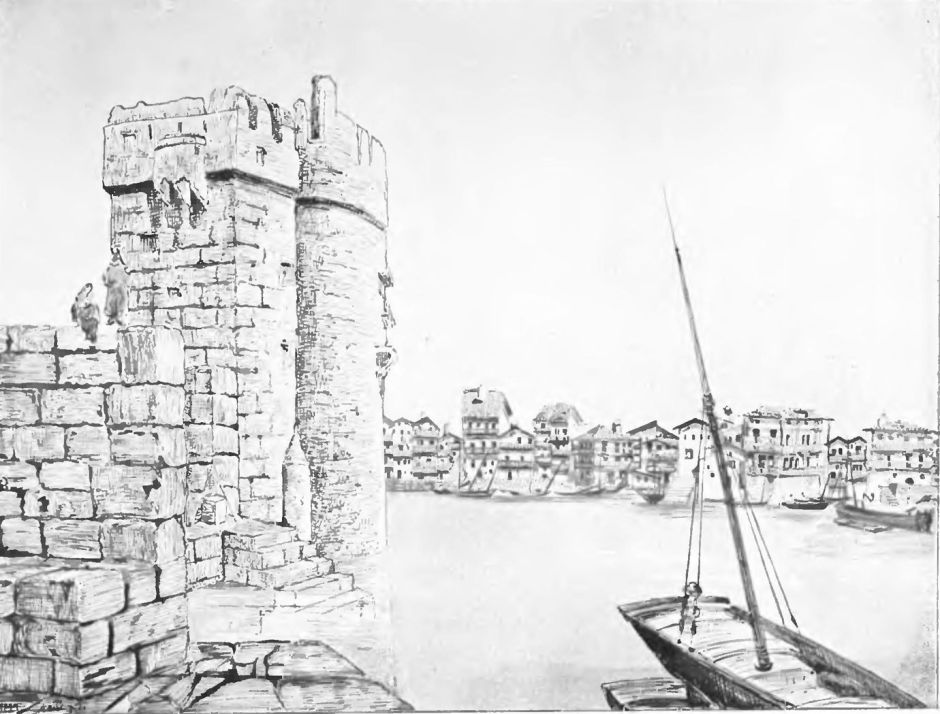Did you know that Victor Hugo (1802-1885), the great French writer of the nineteenth century and author of Les Misérables and The Hunchback of Notre Dame, was also an artist? He drew and painted not for public exhibition, but for his own pleasure, and for his family and friends. For an ‘amateur’ he was prolific, with over four thousand drawings and paintings recorded, and Eugène Delacroix himself expressed the view that he could have been a successful artist, even transforming painting perhaps. See what you think of this small selection.
Hugo grew up at a time of great turmoil, spanning Napoleon’s reign as Emperor and the Bourbon restoration of the monarchy. His father was a senior officer in Napoleon’s army, but his mother was a Catholic Royalist! As a result of his father’s military career, Hugo was well-travelled as a child, and saw the Alps and Italy, for instance.
He married a childhood friend, Adèle Foucher (1803-1868) in 1822, the year before the publication of his first novel. During the 1830s he established himself as a major poet, and in 1829 published his first major mature novel, The Last Day of a Condemned Man, which was to be highly influential on authors such as Albert Camus, Charles Dickens, and Dostoyevsky. Notre-Dame de Paris, known in English as The Hunchback of Notre-Dame, followed in 1831 and brought him popularity across Europe and the Americas.

Most of Hugo’s accessible paintings, like Old Castle in a Storm from 1837, are Gothic-Romantic paintings in ink and wash on paper.
By the late 1830s, Hugo was working on what was to become Les Misérables, although it wasn’t published until 1862. He visited the notorious prison, the Bagne of Toulon, which features in that in 1839, and started writing the book in 1845.

This is his Castle on a Hill from about 1847, again in Indian ink and wash on paper.
Hugo was appointed to the peerage in 1845, then started his political career when he was elected to the French National Assembly in 1848. When Napoleon III seized power in 1851, Hugo left France, first staying in Brussels, then moving to the British island of Jersey, and finally settling on the neighbouring island of Guernsey, where he lived between 1855-1870. He wrote about the island in his novel Toilers of the Sea, which was published in 1866, while he was still in self-imposed exile.

Hugo fought a lifelong battle against the death penalty, which he first committed to print in his early novel The Last Day of a Condemned Man (1829). The Hanged Man “Ecce” from 1854 shows the remains of a hanged criminal swinging from a gibbet.

The Gnome of the Night from 1856 is one of several works which show grotesque figures from folk tales and legend.

John Brown, from 1861, is an engraving after Hugo’s original painting showing the body of the famous American abolitionist, who was tried for treason and murder and was hanged in 1859. Hugo had tried to obtain a pardon for him, while the writer was in exile on Guernsey, and this engraving appeared subsequently on a pamphlet reprinting two of Hugo’s open letters about John Brown.

Hugo’s painting of Château de Walzin was made in 1863. Walzin Castle is in Belgium, where it overlooks the River Lesse.

Octopus from 1866 is a painting which just appears to be fun.

The Steamship ‘Durande’, dated 4 November 1866, was made to accompany his novel Toilers of the Sea, and offered to a critic to thank him for writing a favourable review. It is reminiscent of some of Turner’s marine paintings, perhaps.

My Destiny appears a curious coincidence. Hugo painted this in brown ink, wash and white gouache in 1867, at about the same time that Gustave Courbet painted the same theme of a breaking wave on the shore. Both men had grounds for concern as Napoleon III’s rule came to an end: Hugo was already in exile, and Courbet was soon to leave France.

In some of his paintings, Hugo was extremely experimental in his methods. Evacuation of an Island from 1870 is most unusual, and perhaps more typical of the avant garde in the twentieth century. He is reputed to have practised ‘automatic drawing’ without looking at the paper, and during séances.

Hugo painted this mediaeval tower of Schengen Castle on 13 September 1871.
After the fall of the Paris Commune in 1871, when he failed to be re-elected to the National Assembly, Hugo again left France, returning to the island of Guernsey between 1872-73.
I also have two undated works of Hugo’s.

The House I Lived in at the Corner of the Bridge was published in the artist’s Complete Works in 1913.

This untitled work, made during his many travels, was published in the same collection.
Victor Hugo died on 22 May 1885, at the grand age of 83. He was, perhaps inevitably, given a state funeral, and was buried in a crypt in the Panthéon in Paris.
References

